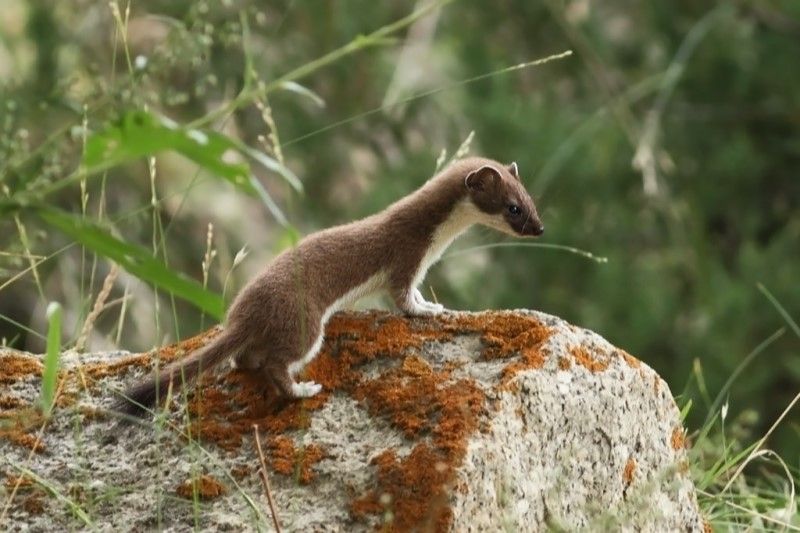Stoat

Status
Native, common and widespread
Population
438,000
Scientific name
Mustela ermine
Stoats have short legs and a long, narrow body with a coat of sandy-brown fur and a yellowish-white underside. They have a bushy black-tipped tail, which easily distinguishes them from the smaller weasel. In Scotland, Wales and the west of Britain, the stoat’s fur turns snow-white in winter and only the tip of the tail remains black. This white fur is known as ermine, hence their Latin name erminea. This fur was once used to make the ceremonial robes of kings and queens. Stoats are mainly nocturnal and are well adapted for following small mammals into their burrows. They bound along at high speed and stop every so often to sit up and sniff the air. Stoats are very playful creatures with an insatiable curiosity; they tirelessly explore holes, buildings and even people, if they sense that there is no danger.
Head-body length: 16 – 31cm
Tail length: 9 – 14cm
Weight: 90 – 445g
Lifespan: Up to 10 years
Reproduction
They mate during the summer and the following spring the females have one large litter of 9 – 13 kits, depending on how much food is available. Male stoats come into the nest when the kits are still young and mate with all the young females so that they are pregnant before they even leave the nest. Young stoats develop rapidly and are able to hunt for themselves at about 11 weeks old.
Diet
Mainly rabbits and small rodents, but also shrews, squirrels, birds and fish; occasionally birds’ eggs, berries and insects.
Habitat
They are not fussy and will live in most places where there is sufficient cover and food, including woodland, cultivated land, hilly areas and grassland.
Predators
Foxes, owls, kestrels and occasionally cats.
Threats
Stoats are legally trapped and shot by gamekeepers because of predation of game birds.
Conservation status
GB Red List: Least Concern (LC): Near Threatened (NT) in Wales.
Population size and distribution
GB population: 438,000. Widely distributed throughout Britain and Ireland.
Did you know?
Stoats kill their prey with a swift bite to the back of the neck and have a fearsome reputation as bold, efficient predators.
